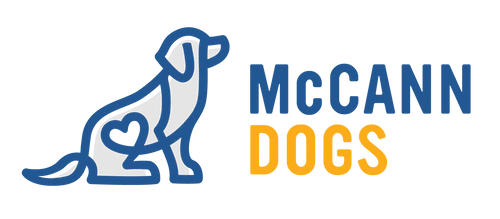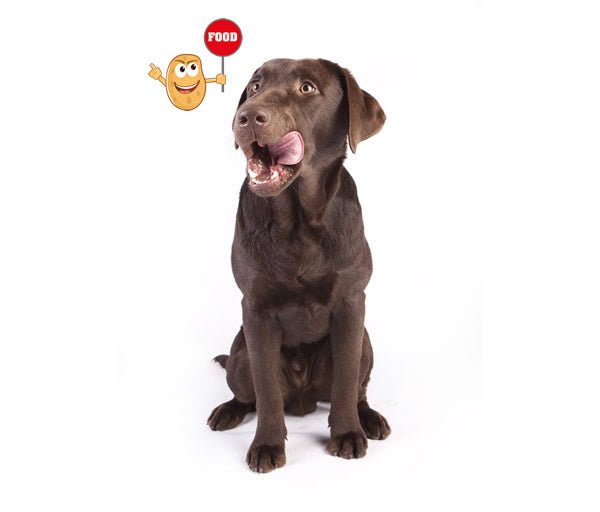That dreaded moment when you enter the kitchen to see that the roast is gone and the dog is licking his chops! UGH! How do you fix this? Well, first, DO NOT discipline the dog. It's not his fault, just his win, and once it's over, it's over. Correcting the dog at this point, even if they look incredibly guilty, will do nothing but damage your relationship.
If you'd like to learn more about why he might look guilty, read this article.
So how do you proceed? The way to move forward from this frustrating scenario is to call for take out. The way to make sure it doesn't happen again is to train the dog! This is a three part process that includes making sure the dog can't make the same mistake again, teaching him the rules of the house and fixing any mistakes the second they occur.
Here's how:
Management
First things first! If the dog doesn't know the rules yet or if they're still a puppy, it's unfair to leave them access to the kitchen and expect them to make good choices. We must do our due diligence and take the time to train our dogs before we can expect them to understand what our expectations are. If they don't understand the rules and we put temptation in their faces, there's little doubt that they will fall prey to it.
While you are in the training phase, be sure you block off access to the kitchen, or better yet, crate a young or untrained dog so that they can't find mischief elsewhere. There are plenty of lessons you'll want to have completed before you allow them freedom to make choices in the home.
Teaching
This is the most important (and the most fun) phase of training a young dog. The best course of action is to teach your dog what they should do in the kitchen. Using a dog bed or even a crate, build value for the remaining there. Teach them that this is a much better place for them to be, rather than investigating the counters or table.
While you are in the training phase, keep a leash on so you can take control when necessary. This is where you'll want to set up training scenarios to teach the dog what your expectations are. First, start with no temptations. The following is a great way to teach dogs what you'd like:
- Bring your dog on leash to an empty counter and ask them to sit. Reward them with something very high value. Repeat this exercise several times making sure you start from the approach to the counter and reward well for the sit at the end.
- Once they've mastered this, add a mild temptation to the counter. A dry cookie or a piece of kibble is a great idea since it smells tempting, but not overly so. Bring your dog on leash to the counter and ask them to sit. Reward with something of incredible value. Steak or cheese is a great idea, but it should be something your dog loves. Repeat several times.
- Repeat the above scenario, but don't ask for the sit. Wait a moment once you're at the counter and see if your dog offers it. Most dogs will if the history of reinforcement is high. Mix up the rewards, but keep them very high value to encourage value built for making the decisions you'd like.
- Continue with the exercise above, but make the temptations bigger to proof the dog. If they start to make mistakes, take a step backwards and make it easier for them to be successful.
- To continue to proof this exercise, randomize rewards at this stage to keep the dog guessing. Sometimes use praise and touch along with food and other times, hold back on the food to start to build a variable reward schedule.
Once you've laid the foundation, think of more creative ways to proof the dog. Keep reinforcement value high and reward well for good choices.
Fixing Mistakes
If your dog makes a mistake, that's okay. It's all part of training. What is important is that they don't get rewarded for making a poor choice. If they are able to jump on the counter and steal the dry cookie or the piece of kibble, that will set back your training quite a bit. Once the dog has created a history of being reinforced, they will try the behaviour again since DOGS DO WHAT'S REWARDING! We can't stress this enough. That's why the management phase is so important. Keeping the dog from being reinforced for making mistakes should be of the highest priority.
Make sure that you have the leash on so that you can take control and if the dog physically. Use the leash to stop the dog by putting it underneath your foot. Leave enough slack that the dog can't feel tension and work through the set ups above. Continue to reinforce heavily and with high value items. If the dog makes a mistake at any point and goes for the temptation on the counter, they should connect lightly with the leash and "self-correct". Once they are sitting again, be sure to reinforce well.
Happy Training!

